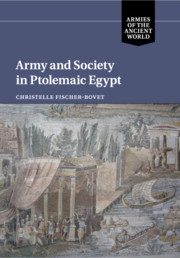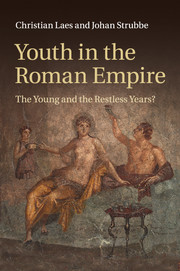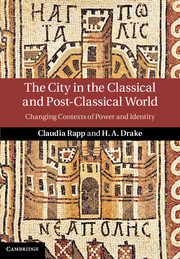Refine search
Actions for selected content:
23990 results in Ancient history
Chapter 18 - Israel’s Hymnal
-
- Book:
- Introduction to the Old Testament
- Published online:
- 28 May 2018
- Print publication:
- 07 April 2014, pp 291-306
-
- Chapter
- Export citation
Index
-
- Book:
- Introduction to the Old Testament
- Published online:
- 28 May 2018
- Print publication:
- 07 April 2014, pp 401-409
-
- Chapter
- Export citation
Chapter 4 - The Primary History
-
- Book:
- Introduction to the Old Testament
- Published online:
- 28 May 2018
- Print publication:
- 07 April 2014, pp 51-66
-
- Chapter
- Export citation
Chapter 1 - What Is the Old Testament?
-
- Book:
- Introduction to the Old Testament
- Published online:
- 28 May 2018
- Print publication:
- 07 April 2014, pp 1-15
-
- Chapter
- Export citation
Chapter 2 - Word of Truth – Word of God
-
- Book:
- Introduction to the Old Testament
- Published online:
- 28 May 2018
- Print publication:
- 07 April 2014, pp 16-30
-
- Chapter
- Export citation
Chapter 6 - Ancestors
-
- Book:
- Introduction to the Old Testament
- Published online:
- 28 May 2018
- Print publication:
- 07 April 2014, pp 84-98
-
- Chapter
- Export citation
Contents
-
- Book:
- Introduction to the Old Testament
- Published online:
- 28 May 2018
- Print publication:
- 07 April 2014, pp v-xi
-
- Chapter
- Export citation
Chapter 3 - The Old Testament World
-
- Book:
- Introduction to the Old Testament
- Published online:
- 28 May 2018
- Print publication:
- 07 April 2014, pp 31-50
-
- Chapter
- Export citation
Chapter 12 - Land
-
- Book:
- Introduction to the Old Testament
- Published online:
- 28 May 2018
- Print publication:
- 07 April 2014, pp 184-206
-
- Chapter
- Export citation

Philosophical Life in Cicero's Letters
-
- Published online:
- 05 April 2014
- Print publication:
- 03 April 2014

Army and Society in Ptolemaic Egypt
-
- Published online:
- 05 April 2014
- Print publication:
- 10 April 2014

Youth in the Roman Empire
- The Young and the Restless Years?
-
- Published online:
- 05 April 2014
- Print publication:
- 20 March 2014

The City in the Classical and Post-Classical World
- Changing Contexts of Power and Identity
-
- Published online:
- 05 April 2014
- Print publication:
- 14 April 2014
General index
-
- Book:
- Philosophical Life in Cicero's Letters
- Published online:
- 05 April 2014
- Print publication:
- 03 April 2014, pp 256-260
-
- Chapter
- Export citation
Chapter 4 - A Stoic lecture:Epistulae ad familiares9.22
-
- Book:
- Philosophical Life in Cicero's Letters
- Published online:
- 05 April 2014
- Print publication:
- 03 April 2014, pp 161-194
-
- Chapter
- Export citation
Acknowledgements
-
- Book:
- Philosophical Life in Cicero's Letters
- Published online:
- 05 April 2014
- Print publication:
- 03 April 2014, pp vii-viii
-
- Chapter
- Export citation
Contents
-
- Book:
- Philosophical Life in Cicero's Letters
- Published online:
- 05 April 2014
- Print publication:
- 03 April 2014, pp v-vi
-
- Chapter
- Export citation
Chapter 5 - Dealing with Caesar: the συμβουλευτικóν
-
- Book:
- Philosophical Life in Cicero's Letters
- Published online:
- 05 April 2014
- Print publication:
- 03 April 2014, pp 195-219
-
- Chapter
- Export citation
Conclusions
-
- Book:
- Philosophical Life in Cicero's Letters
- Published online:
- 05 April 2014
- Print publication:
- 03 April 2014, pp 220-227
-
- Chapter
- Export citation
Series page
-
- Book:
- Philosophical Life in Cicero's Letters
- Published online:
- 05 April 2014
- Print publication:
- 03 April 2014, pp ii-ii
-
- Chapter
- Export citation
